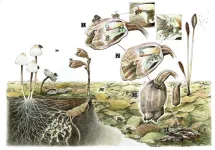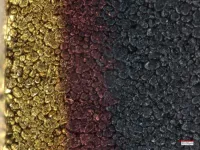Early detection allows for timely intervention in many diseases before they progress to a severe stage, often at a lower treatment cost. This is particularly crucial in the case of cancer, as the stage of cancer development at the time of initial diagnosis significantly influences the patient's prognosis and survival rate. Therefore, regular medical check-ups can ensure better survival and quality of life. However, the multitude of medical examination items makes the experience both loved and loathed. With various tests and procedures to undergo, the process can often consume a substantial portion of one's day.
At this point, one might wonder how convenient it would be if all diseases could be indicated through a simple three-minute blood test. The advancement of modern medical technology is gradually turning this wish into a reality. Indeed, the presence of a considerable number of cancers can be suggested by examining circulating tumor cells (CTCs) in the blood. However, the concentration of these CTCs is often extremely low, falling below the detection limit of current instruments. To address this issue, cell separation technology shows great promise.
Cell separation refers to the process of isolating a specific group of cells from a biological sample, such as blood or tissue, by removing other cell populations. Through cell separation techniques, the quantity and concentration of a particular cell type in a biological sample can be enhanced, which is why this process is also known as cell enrichment. This technology finds extensive applications in various fields, including biological research, disease diagnosis, cell therapy, drug screening, and gene analysis. For instance, by enriching the CTCs in blood, it becomes feasible to conduct blood tests for early-stage cancer screening, significantly enhancing the diagnostic value of such examinations.
Recently, a research team from Griffith University published a research article titled "Asymmetrical Obstacles Enable Unilateral Inertial Focusing and Separation in Sinusoidal Microchannel" in the esteemed journal Cyborg and Bionic Systems as part of the China Science and Technology Journal Excellent Action Plan. In their study, they proposed a novel cell enrichment method that utilizes asymmetrical obstacles in curved microchannels to achieve unilateral inertial focusing, resulting in an increase of tumor cell concentration from 1% to over 90%.
How did they achieve such a high level of cell enrichment? The answer lies in the utilization of a sinusoidal microchannel with asymmetrical obstacles structures.
The theory of separation
To elucidate the mechanism behind the cell sorting effect of the sinuous microchannel, a comparison can be drawn with a similar phenomenon observed in the natural world: meandering river channels. In straight river courses, the obstructive effect of sedimentation along both banks leads to lower flow velocities at the sides, while the central flow exhibits higher velocities. However, in meandering river channels, the outer banks of convex bends experience higher flow velocities compared to the inner banks. Consequently, the increased flow velocity on the outer side facilitates greater erosion of the bank, resulting in a further increase in the degree of meandering in the river course.
Even without considering the erosion effect of the riverbank, the principle of sedimentation towards the convex bank due to the pressure difference and inertia caused by the flow velocity difference is still applicable. This principle is employed in microfluidic channels for cell separation. In curved channels, cells tend to accumulate on the outer side of the bend (where the flow velocity is higher) due to inertia and pressure differences. Moreover, because cells of different sizes experience different forces from inertia and pressure, they gradually separate. The smaller cells tend to stay closer to the boundaries of the channel, while the larger cells are more inclined to occupy the central region. Therefore, by implementing multiple bends in the channel, cells of varying sizes can be effectively separated based on the combined effects of flow velocity-induced pressure differences and inertia.
Simulation
The innovation of this study lies in the incorporation of various protrusions or indentations within the channel to further enhance cell separation efficiency induced by velocity differences. Researchers initially conducted simulations to investigate the velocity field distribution of the fluid in curved channels with different obstacles.
Through numerical simulations, they discovered that the introduction of protrusions or indentations as obstacles resulted in an enhancement of the intermediate flow velocity within the channel, leading to a more asymmetrical distribution of the velocity field. They hypothesized that this asymmetric velocity field distribution might facilitate the preferential accumulation of cells on one side of the channel (unilateral focusing).
Experiment validation
Subsequently, they experimentally validated this hypothesis by confirming that the presence of obstacles in the curved microchannel indeed caused cell focusing on one side of the channel. Furthermore, they observed that this unilateral focusing effect was dependent on the size of the cells, indicating the potential to separate cells of different sizes based on this characteristic. To verify their conjecture, the research team initially conducted separation experiments using 10-micrometer and 15-micrometer polystyrene microspheres.
Under bright-field microscopy, it can be observed that at the inlet, small particles (in blue) and large particles (in red) are mixed together. However, at the middle outlet, predominantly large particles are visible, whereas at the other side outlet, only small-sized particles are observed.
Therefore, can this characteristic be utilized to separate white blood cells (8-12 micrometers) and tumor cells (16-18 micrometers), which have distinct size differences? To verify this hypothesis, the researchers conducted the following experiment. They prepared a mixture of U87MG cancer cell line and white blood cells (WBCs) in a 1:100 ratio and injected it into the microchannel. At the outlet of the channel, it was observed that significantly larger-sized cancer cells aggregated at the middle outlet, while the smaller-sized WBCs accumulated at the upper side of the channel. Quantitative analysis revealed that after passing through this microchannel, the concentration of cancer cells increased from 1.01% to 90.13%, making it suitable for subsequent detection and analysis.
Summary and Outlook
This study proposes a novel approach to adjust and reduce the inertial focusing position in microchannels by embedding asymmetric obstacles. By incorporating asymmetric obstacle patterns, such as single-sided concave, single-sided convex, and concave-convex patterns, into symmetric curved channels, the researchers observed unique one-sided focusing patterns near the sidewalls of the channels in the case of single-sided concave and concave-convex obstacle channels, which were not evident in the case of single-sided convex obstacle channels. Furthermore, the position of one-sided focusing was sensitive to particle size.
In essence, by introducing concave-convex patterns into curved channels, particles in the fluid are directed towards one side of the channel, and this aggregation phenomenon is also dependent on particle size; smaller particles tend to accumulate closer to the channel boundary. Leveraging this phenomenon, the researchers achieved the separation of cells with different sizes. For instance, they were able to isolate tumor cells from blood samples containing white blood cells with high purity (over 90%), making it feasible to screen various types of cancer based on blood tests.
With advancements in microfluidic technology and medical detection methods, it is conceivable that in the near future, routine blood tests may provide monitoring and early detection of the majority of diseases, transforming the landscape of medical diagnostics.
Reference
Cha Haotian, Dai Yuchen, Hansen Helena H. W. B., Ouyang Lingxi, Chen Xiangxun, Kang Xiaoyue, An Hongjie, Ta Hang Thu, Nguyen Nam-Trung, Zhang Jun. Asymmetrical Obstacles Enable Unilateral Inertial Focusing and Separation in Sinusoidal Microchannel. Cyborg Bionic Syst. 2023:4;0036. DOI:10.34133/cbsystems.0036
END


